Style features
Entering a modern Japanese house, it is difficult to determine how rich it is if the interior is designed in Japanese style:
- The decor of the bedroom is quite ascetic and does not tolerate excesses. This is a kind of protest against the philosophy of consumerism, a way to get rid of everything unnecessary.
- The design of the bedroom takes the best from Japanese culture, so it is recognizable at first glance, although the interiors are different from each other.
- In Japan, despite the fast pace of life, nature and art are traditionally appreciated, which is often reflected in the interior of the bedroom.
Bedroom color
For the decoration of the bedroom, a natural range is chosen: beige, brown, white, herbal colors. The interior is diluted with shades of red: pink, cherry. In the modern world, Japanese design is undergoing some rethinking, but the main features are light colors, naturalness and harmony.
Beige walls are a classic option, especially for a small Japanese-style bedroom. To prevent the room from turning into a monochromatic "box", the design is diluted with contrasting details in dark brown tones.
Warm greens and reds are used when the bedroom lacks expression. Textiles or one wall painted in a rich color can act as accents.
Pictured is a Japanese-style bedroom designed in chocolate and creamy tones. Orange pillows are a bold accent to bring the ambiance to life.
In oriental design, a combination of black and white is popular, reflecting the balance between Yin and Yang - feminine and masculine. Such an interior is more often chosen by modern people, although the monochrome palette is quite traditional; thanks to contrasts, the Japanese bedroom looks more dynamic and spacious.
Materials and finishes
Interior decoration in oriental style involves the use of natural materials. Artificial analogs are also acceptable, since their performance properties are often better.
The walls of a laconic Japanese bedroom are covered with paint or wallpaper. To add texture, you can decorate the space with wood paneling or decorative plaster. One of the popular and sustainable solutions is natural bamboo canvases that are glued to the wall.
In the photo there is an accent wall with a painting on an ethnic theme: cherry blossoms and ancient Japanese architecture.
Perhaps the most recognizable element of a Japanese bedroom is the crate. It is used in ceiling and wall decoration. In oriental interiors, it is impossible to find a round or multi-tiered ceiling: it has a rectangular shape, sometimes supplemented with beam structures or wooden cladding.
Since the inhabitants of the Land of the Rising Sun prefer to walk around the house barefoot, wood or its analogs - parquet or laminate - is used as flooring. Ceramic tiles are much colder, so they are not so popular without a "warm floor" system.
Selection of furniture
The centerpiece of the Japanese-style bedroom is the low bed, which is minimalist in design. Straight lines without embellishments, the maximum is a soft back or headboard with an Asian-style pattern. The top of asceticism is a high mattress on the floor instead of a bed.
Bedrooms are often equipped with a podium, which is especially appropriate in small rooms: the space under the bed can be used to store things. Low bedside tables are placed on the sides of the headboard.
Owners of cramped rooms install mobile screens made of wooden frames and translucent paper called shoji. They help to divide space if a workspace or dining room is supposed to be in the bedroom.
In the photo there is a sleeping place organized on a wide podium. The second part of the room is reserved for a recreation area and clothes storage.
Furniture is chosen simple and functional, if possible - from natural wood species (walnut, ash, beech).
Small objects are hidden behind the sliding doors of the wardrobes, the facades of which successfully imitate shoji partitions. Sliding wardrobe doors save space, and their decorative lathing allows you to add oriental flavor to the bedroom. In a Japanese room it is impossible to find massive "walls" and open shelves full of books and souvenirs: the cabinet is built into a niche or occupies one of the narrow walls and does not attract attention.
Lighting
It is difficult to find a Japanese bedroom decorated in cold colors. The same applies to lighting: warm lamps with white or yellow lampshades are selected for the room, which add coziness to the room and tune in to a calm rest. Spot LED spots are rare guests here, but pendant lamps with soft diffusing light are a good choice. Garlands of round paper lanterns give a special mood.
It is worth paying attention to the interesting design of the table lamp in the second photo. Its lampshade is reminiscent of the rounded roof of classic buildings in Japan. This shape is very popular in Asian interiors.
The photo shows translucent wall lamps and a composition of hand-painted bamboo.
Textiles and decor
Art in a distant Asian country has always been valued, reflected in traditional Japanese homes.
The decor is popular with images of landscapes with cherry blossoms, cranes and Mount Fuji, as well as paintings and accessories with hieroglyphs. The wall can be decorated with a fan with ethnic patterns or even a kimono. Vases with ikebans, bamboo branches, bonsai are appropriate. To decorate the head of the bed, you can simply use a shoji screen mounted on the wall.
But do not forget that the less decor is used in the bedroom, the more laconic and spacious it looks, which means it is more in line with the spirit of Japan.
In the photo there is a bedroom in a modern Japanese style, the design of which is light and airy: light finishes, lathing, low furniture. The headboard is adorned with an autumn landscape, and the bed is a traditional bolster pillow.
Residents of eastern countries love to decorate the interior with pillows of various shapes and sizes - square, round or in the form of a roller. Sometimes pillows can be seen on the floor: the Japanese use them as a seat. Oriental-themed carpets and bedspreads serve only as touches and, becoming the highlight of the interior, more resemble works of art than a utilitarian piece of furniture.
Natural textiles made of cotton and linen add sophistication and comfort to the bedroom. The fabric with unobtrusive prints looks picturesque and does not stand out from the general color scheme.
Massive curtains with folds and lambrequins in the bedroom are unacceptable: windows are decorated with light airy fabrics or roller blinds and blinds.
Photo gallery
As you can see, the characteristic features of the Japanese style can be successfully applied in both spacious and small rooms. Thanks to its laconicism, functionality and natural materials, a Japanese-style bedroom will become a place where you can relax your body and soul.


 10 practical tips for arranging a small kitchen in the country
10 practical tips for arranging a small kitchen in the country
 12 simple ideas for a small garden that will make it visually spacious
12 simple ideas for a small garden that will make it visually spacious
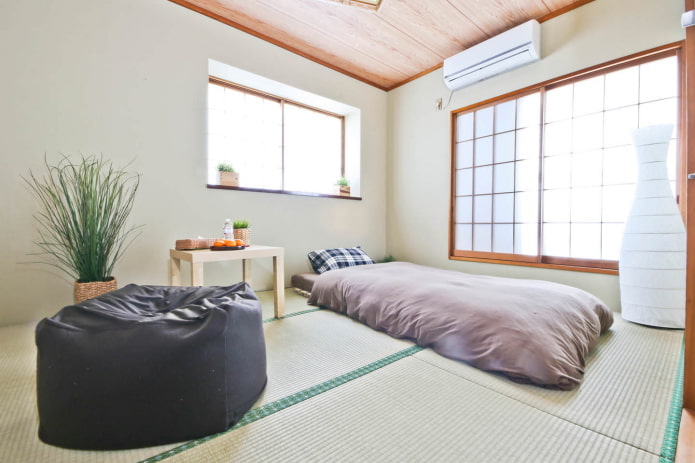
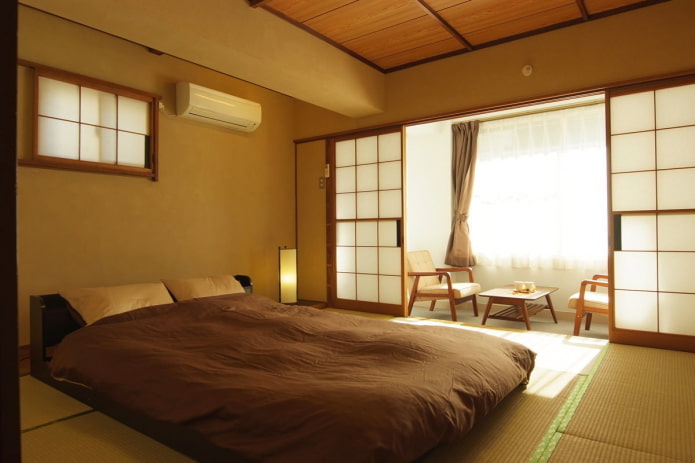
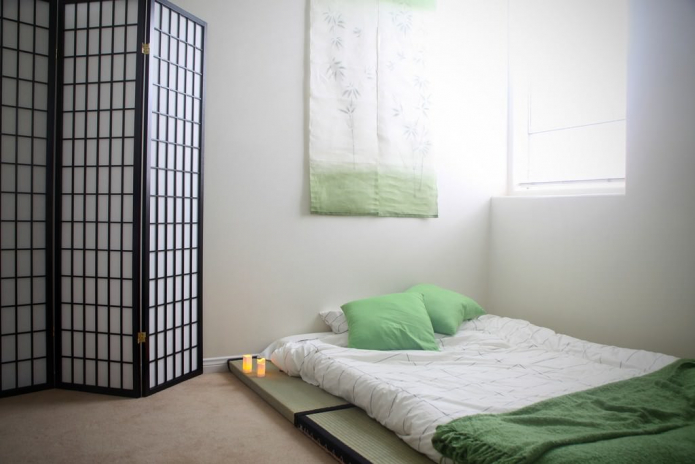

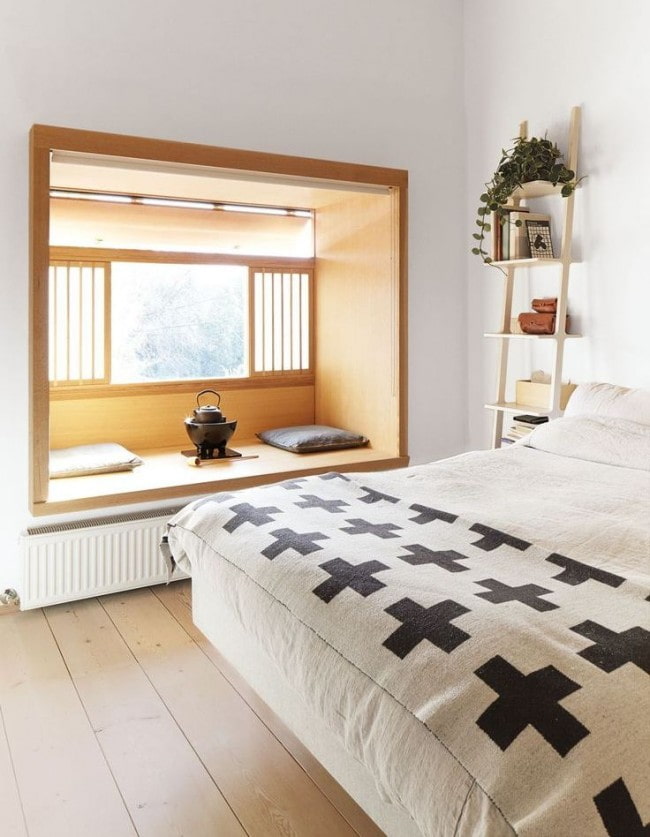
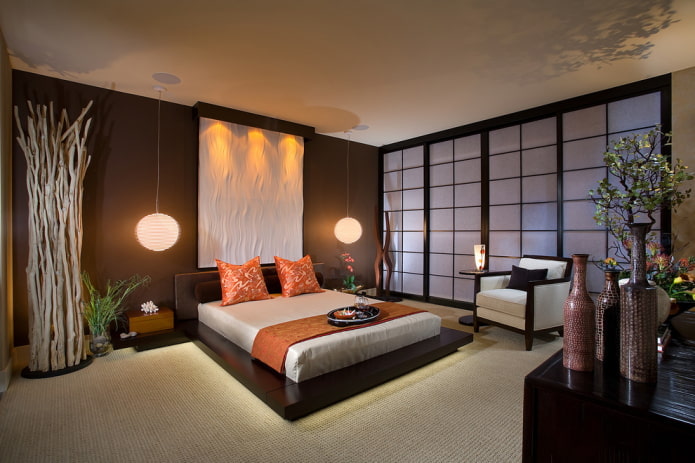

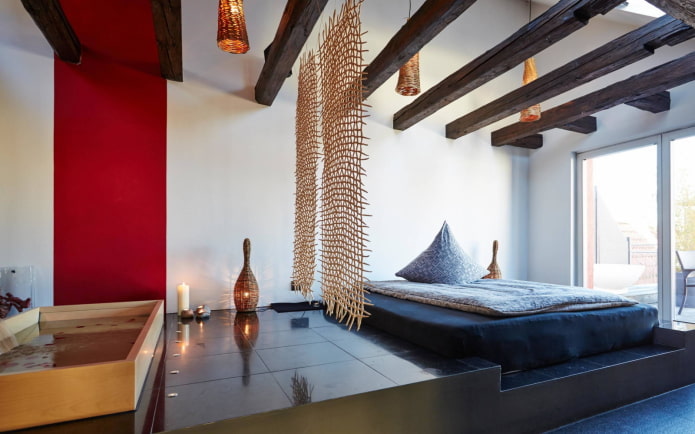
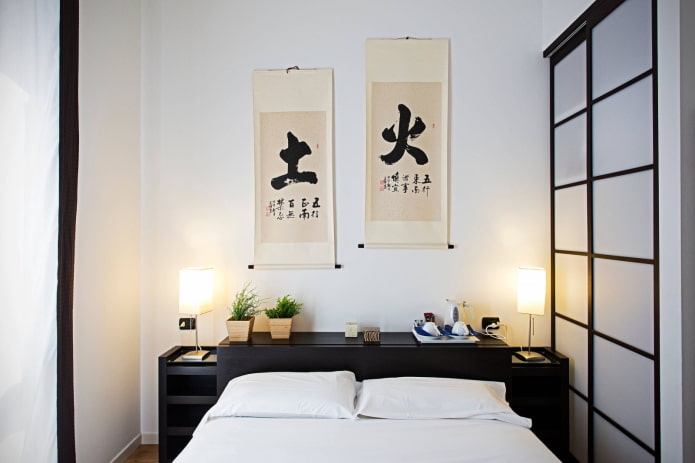
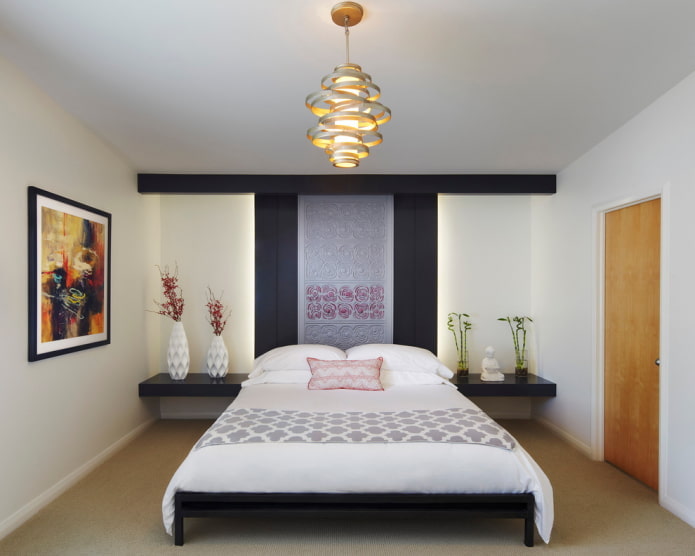
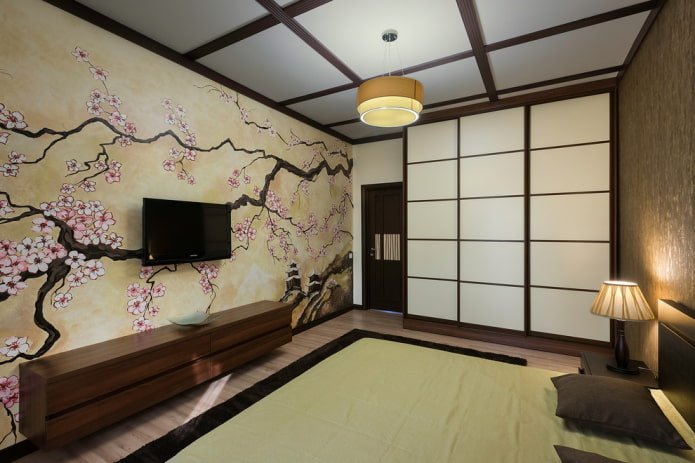
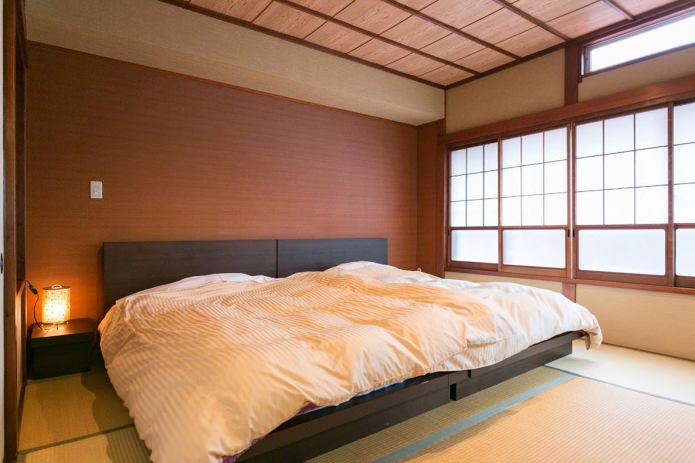

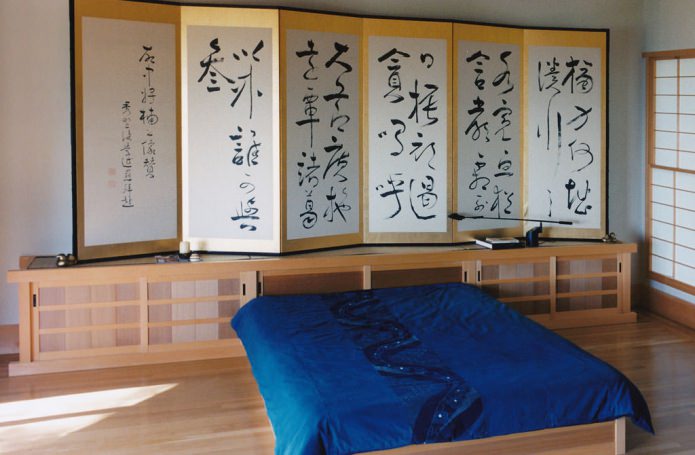
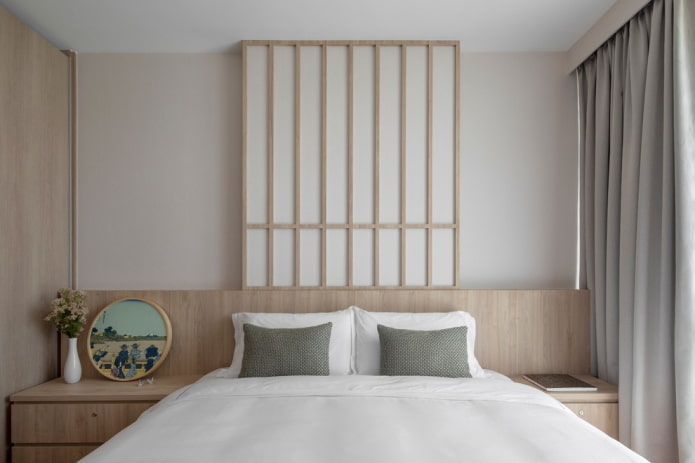



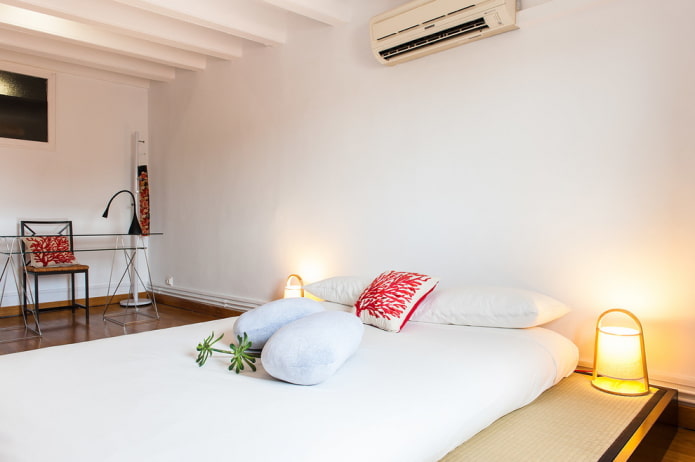
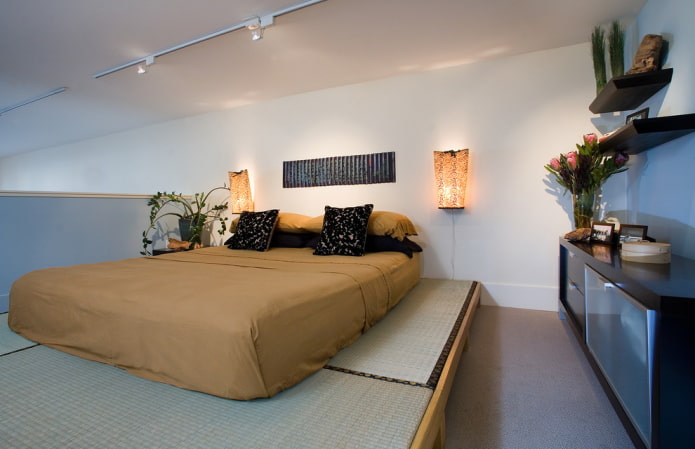
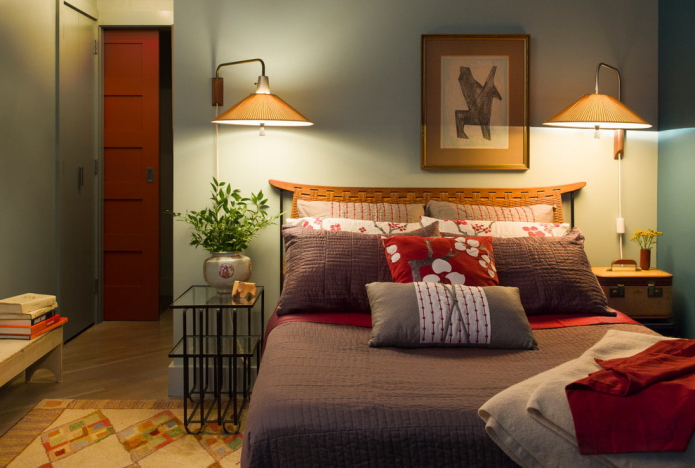
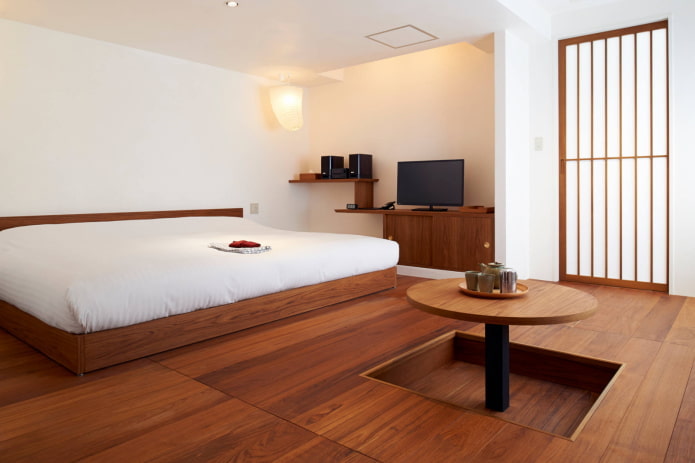
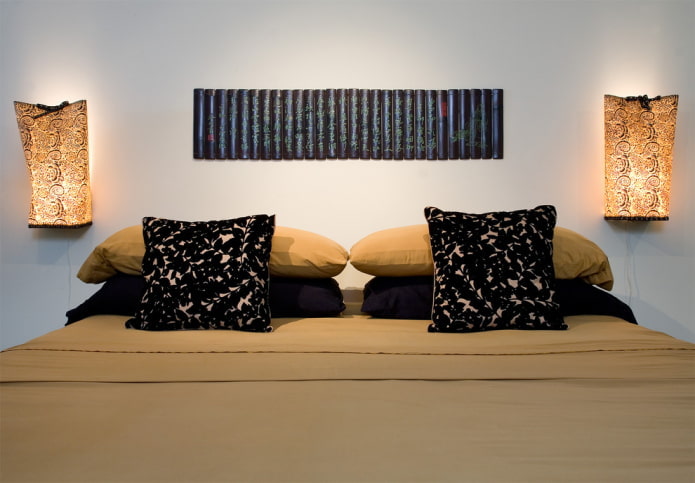
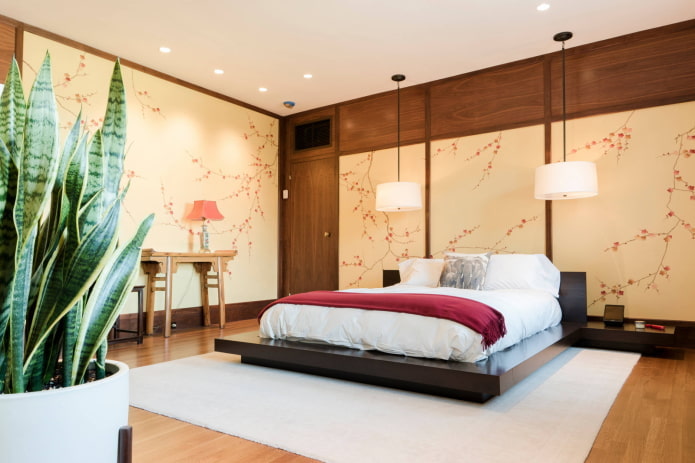
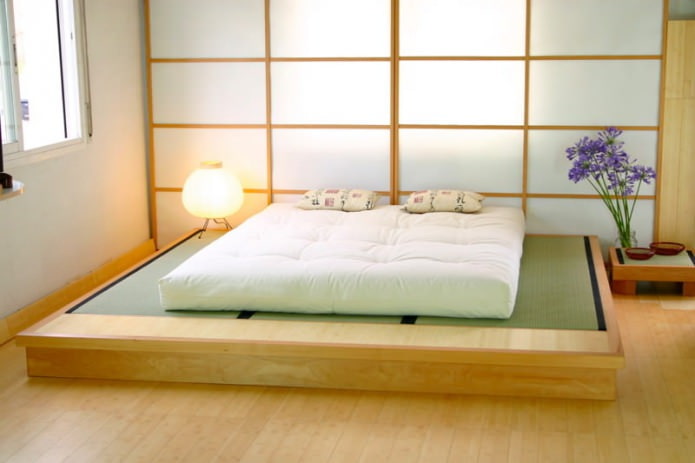

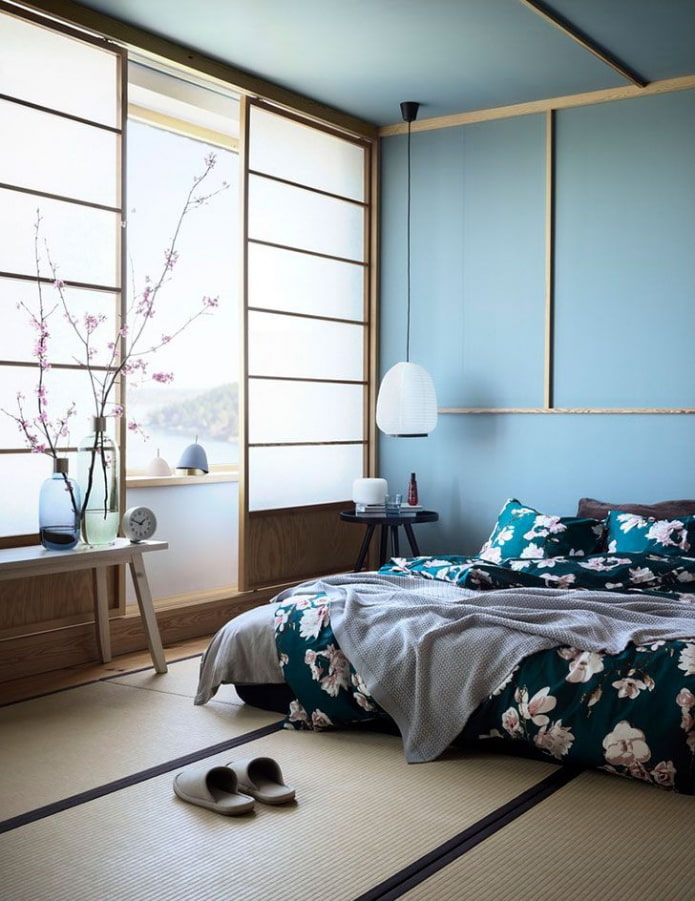
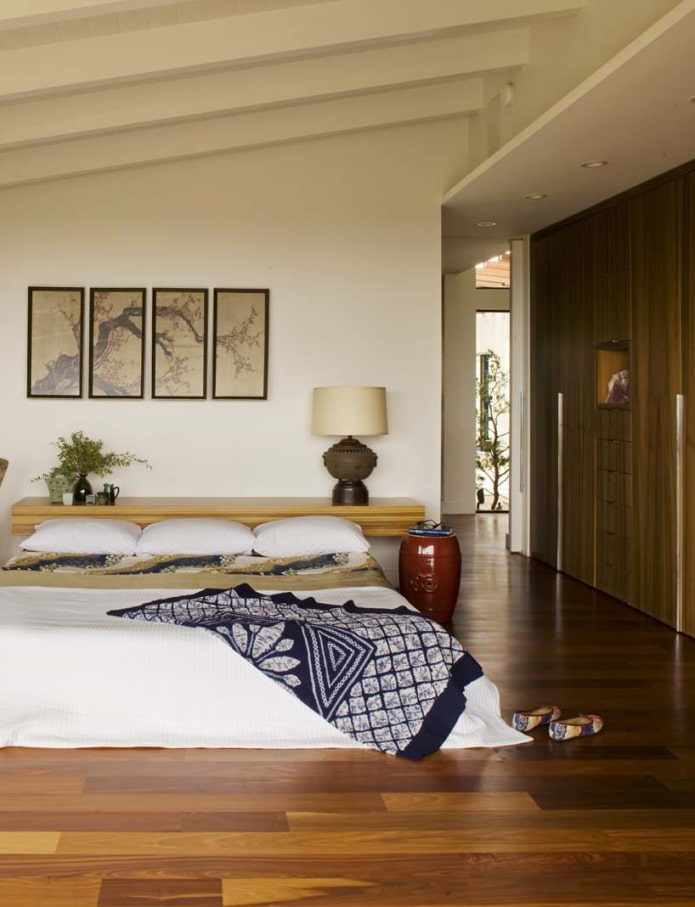
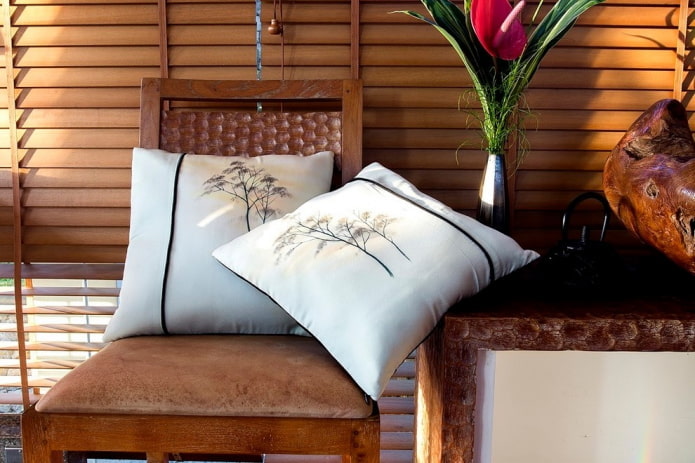
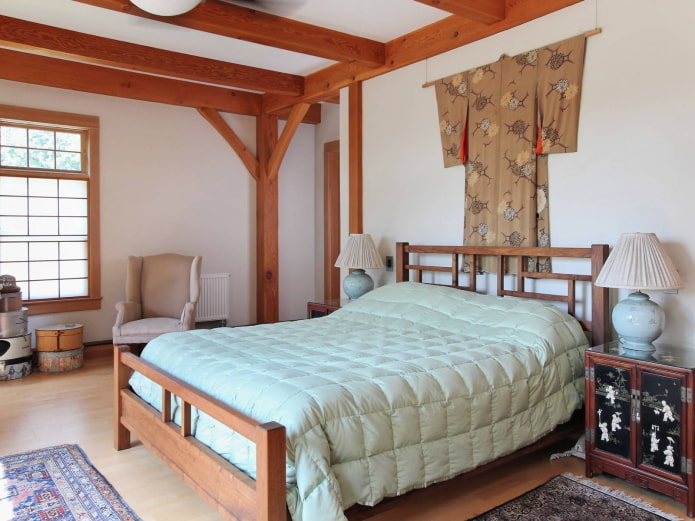
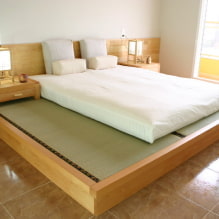

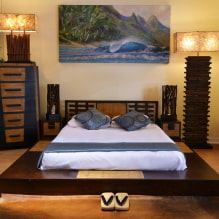

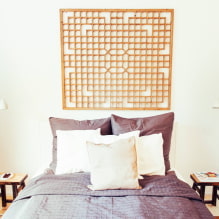
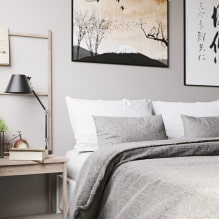
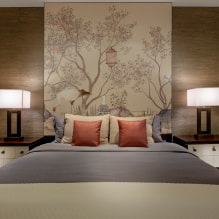

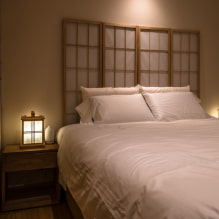
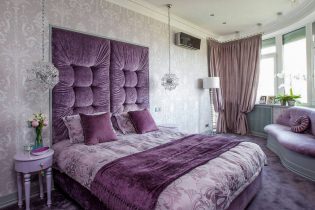 Wall design in the bedroom: choice of colors, finishes, 130 photos in the interior
Wall design in the bedroom: choice of colors, finishes, 130 photos in the interior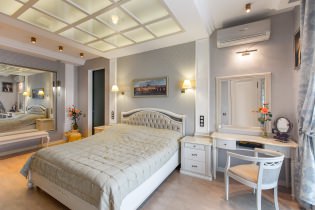 Bedroom design with gray wallpaper: 70 best photos in the interior
Bedroom design with gray wallpaper: 70 best photos in the interior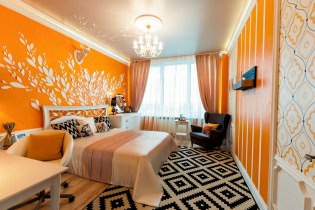 Bedroom design in orange tones: design features, combinations, photos
Bedroom design in orange tones: design features, combinations, photos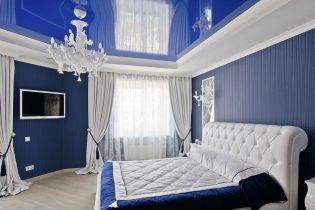 Stretch ceilings in the bedroom: 60 modern options, photo in the interior
Stretch ceilings in the bedroom: 60 modern options, photo in the interior The choice of an orthopedic mattress: features, types of fillers, sizes
The choice of an orthopedic mattress: features, types of fillers, sizes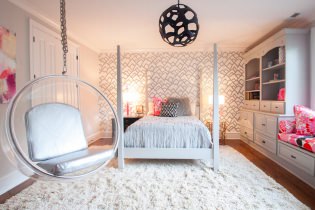 Bedroom design for a girl: photos, design features
Bedroom design for a girl: photos, design features